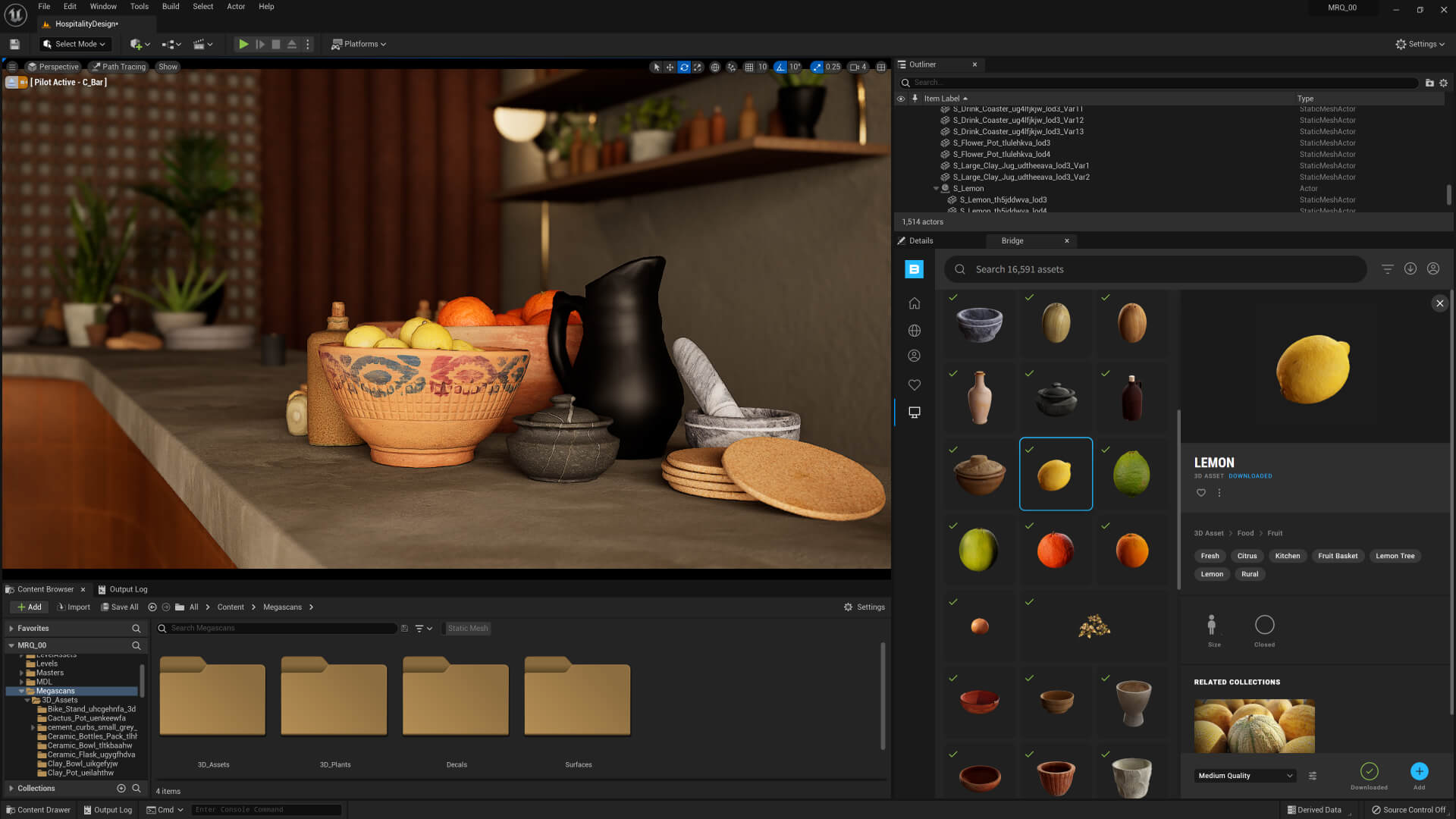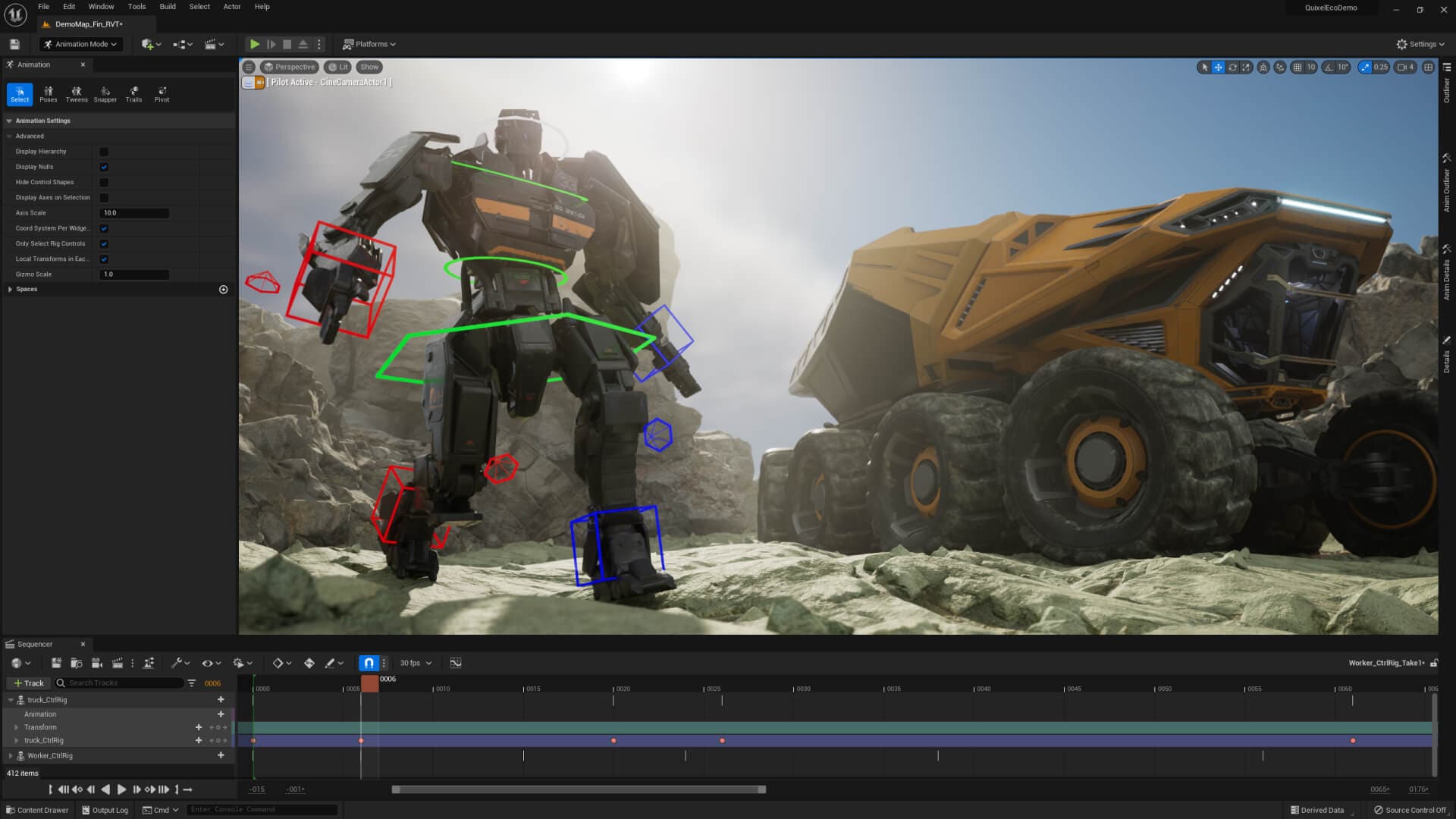Our Verdict
Unreal Engine 5 is a game changer. More than the individual features that have been introduced and the technology that underpins them, there is a sense that many of the future technological developments will be built upon this foundation.
For
- Unbelievable realism
- Fast open world creation
- LOD models handled effortlessly
Against
- Successful projects incur royalties
- Can be difficult to use
- Steep learning curve
Why you can trust Creative Bloq
In our Unreal Engine 5 review, we're taking a look at something the world waited eight years for. UE5 represents a mammoth leap forward in technology for the games industry and completely redefines the playing field for the future of gaming, augmented reality and whatever the future holds for the digital parallel of the physical world. This release has come at a key time and will no doubt provide much of the tech required for moving many companies toward realising their ambitions for the world at large.
We first had a sneak peek of UE5 back in 2020 when Epic Games released a demo of what was possible with the engine. This demo, based on a Tomb Raider-like character, wowed the world, as realism which was previously unachievable became eminently possible. In true dramatic style, two years on, we were privileged to see another demo, this time from Xbox Games developer the Coalition. "The Cavern" runs on Xbox Series X and is impressive from start to finish. (New tech demos such as Layers of Fear running un EU5, show what this engine can do.)
Unreal Engine 5 (now version 5.5) is seen by many as the best game development software around at the moment - below I explain why - but it's so adaptable it's also considered as the best free animation software for specific needs.
The main character looks absolutely amazing, especially the hair and beard which alone includes 3.5 million triangles. The scene itself includes 100 million triangles, with everything, including lighting and reflections, rendered in real-time. This demo gives us a good look into what is possible with UE5.
The success of UE5 seems inevitable, with Sony and Kirkbi, parent company of the Lego Group, investing $1 billion each. Enough of the hype though. Why is everyone so excited about UE5? Let’s take a look at the new developments.

Unreal Engine 5 review: Lumen
Lumen is UE5’s global illumination and reflections system. It has been built for next-gen consoles and is fully dynamic in its implementation. It enables artists to achieve realistic lighting and reflections no matter the scene or time of day, or however complex the lighting setup needed. Its dynamic nature is its strength, meaning everything is dynamically adjusted to light sources in the scene. Much of what is possible in Lumen is possible within modern day renderers but the fact that UE5 does it all in real-time makes it even more remarkable.
Unreal Engine 5 review: Nanite
Gone are the days of creating separate models for different levels of detail (LOD). With Nanite, UE5’s virtualized geometry system, artists only need to import their high resolution model and leave the engine to do the rest. UE5 will analyse the mesh and break it down into “hierarchical clusters of triangle groups”. This means that during the real-time rendering of those objects UE5 will determine which LOD to display at any given time. With only what is needed residing in memory, you’ll find your games displaying at much improved frame rates.
With this technology, artists can now import and utilise high-definition sculpts and scans for their characters. The man in "The Cavern" demonstrates what is possible with impressive levels of detail.

Unreal Engine 5 review: Meta Sounds
This is UE5’s new audio system. It lets you control every sound that your end users will experience. Through major workflow improvements and further customisation, audio designers can create powerful audio systems with the utmost accuracy and control. Programmers will feel right at home with Meta Sounds and many will now be able to set aside middleware engines like WWise and FMOD. There are, of course, still some limitations to this audio system, especially when it comes to handling complex audio setups and dialogue-heavy games.
Unreal Engine 5 review: Conclusion

The capabilities of UE5 are yet to be fully felt by the industry. Many of the high profile games using UE5 are still in development and it’ll take years for us to truly experience what’s really possible.
With UE5 being completely free to download and create, it’s a bit of a no-brainer to give it a whirl. After all, you’ll only start paying royalties when your project earns over $1 million, but by that point you won’t mind paying it because of the incredible success that you’ve achieved.
This content originally appeared in 3D World magazine. Subscribe to 3D World at Magazines Direct.
Read more:
- I love these comic book covers inspired by The Last Of Us
- This is the silliest Nintendo Switch game I've ever seen
- The best retro gaming consoles

Thank you for reading 5 articles this month* Join now for unlimited access
Enjoy your first month for just £1 / $1 / €1
*Read 5 free articles per month without a subscription

Join now for unlimited access
Try first month for just £1 / $1 / €1
out of 10
Unreal Engine 5 is a game changer. More than the individual features that have been introduced and the technology that underpins them, there is a sense that many of the future technological developments will be built upon this foundation.

Paul is a digital expert. In the 20 years since he graduated with a first-class honours degree in Computer Science, Paul has been actively involved in a variety of different tech and creative industries that make him the go-to guy for reviews, opinion pieces, and featured articles. With a particular love of all things visual, including photography, videography, and 3D visualisation Paul is never far from a camera or other piece of tech that gets his creative juices going. You'll also find his writing in other places, including Creative Bloq, Digital Camera World, and 3D World Magazine.


